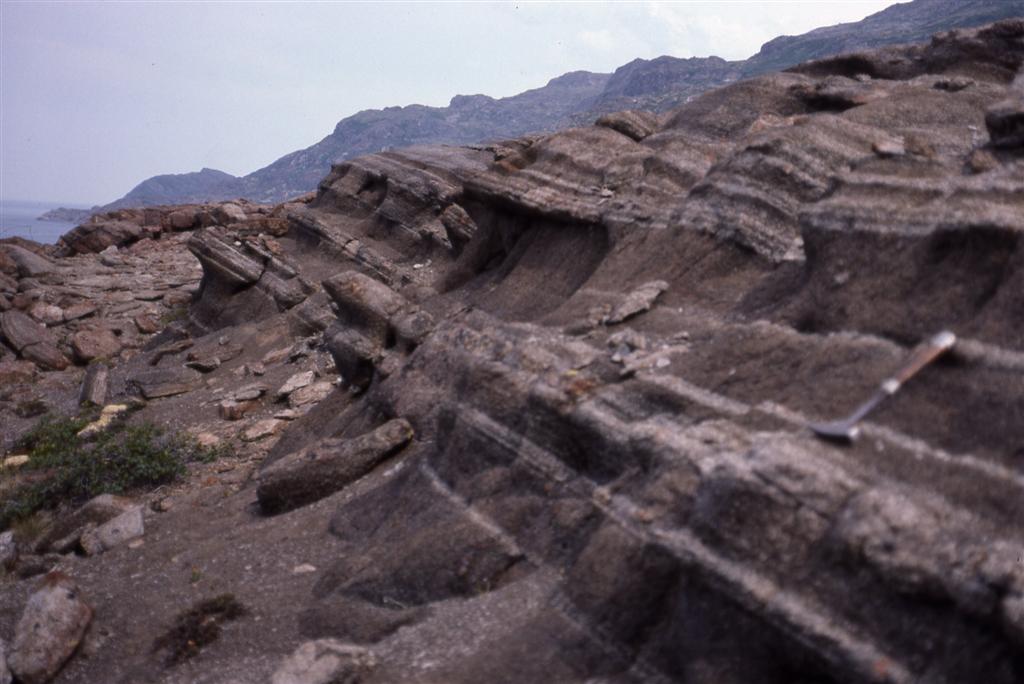Kiglapait Layered Mafic Intrusion, Labrador, Canada
Crystal size distributions (CSD) of plagioclase, olivine and
clinopyroxene from the Kiglapait intrusion, Labrador were measured
for a series of 13 samples spanning most of the exposed intrusion.
All CSDs lack small crystals and are slightly curved to the right,
concave up. All CSDs of a mineral sweep out a fan, as expected
where there is relatively little variation in phase proportion.
CSD dispersion can be replicated using the communicating
neighbours model of textural coarsening (Ostwald ripening). Most
of the textural variation in the intrusion is the result of
variable degrees of coarsening. It is proposed that coarsening
occurred in the outer part of the crystallisation boundary layer
where release of latent heat and changes in the intercumulus
liquid composition resulted in a reduction in undercooling,
suppression of nucleation and coarsening. Particularly
coarse-grained areas reflect focusing of circulating magmatic
fluids during coarsening. The effects of crystal settling were not
observed in the CSDs, even within single well-developed layers.
They were probably concealed by the pervasive textural coarsening.
CSDs do not suggest that mechanical compaction has played an
important role in the formation of texture, although it is very
likely to have occurred. However, samples from the lower part of
the intrusion show textural evidence of pressure-solution
compaction.
Michael D. Higgins, 2002, The Role of Textural Coarsening in the
Development of the Kiglapait Layered Mafic Intrusion, Labrador,
Canada: A Crystal Size Distribution Study, Contributions to
Mineralogy and Petrology, 144: 314-330.



